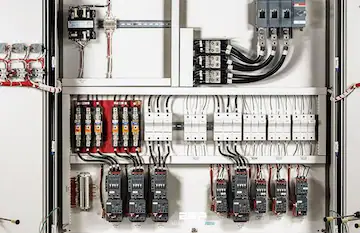Wiring Harnesses for Control Panels play a crucial role in ensuring efficiency, safety, and organization in electrical systems. At Shreeniwas Equipments Pvt. Ltd., we understand that a well-designed wiring harness is the backbone of any reliable control panel.
Acting as the nervous system of industrial and commercial control panels, these harnesses bundle and protect wires, making complex electrical systems easier to manage and maintain.
In this blog, written on behalf of a control panel, we’ll discuss why wiring harnesses are vital and how to design them the right way for optimal performance.
What is a Control Panel Wiring Harness?
A Control Panel Wiring Harness is an organized assembly of electrical wires, cables, and connectors that transmit signals and power between components inside a control panel.
These harnesses are designed to route and protect multiple wires in a compact, easy-to-manage form. They eliminate clutter, reduce wiring errors, and improve overall system performance.
Each harness is custom-made based on the control panel's layout and functional requirements, ensuring precise connectivity between devices such as PLCs, relays, contactors, switches, and indicators.
Importance of Wiring Harnesses in Control Panels
• Organized Wiring Layout
Wiring harnesses prevent messy and tangled wires. They organize the wiring within the control panel, making it easier to trace connections, perform maintenance, and upgrade systems when necessary.
• Enhanced Safety
Harnesses reduce the risk of short circuits, loose connections, and wire damage due to vibrations or external impacts. They help meet safety standards and prevent potential electrical hazards.
• Time and Cost Efficiency
Pre-assembled wiring harnesses simplify installation, saving time during the panel assembly process. This also minimizes errors, leading to reduced rework costs and downtime.
• Enhanced Safety
Harnesses reduce the risk of short circuits, loose connections, and wire damage due to vibrations or external impacts. They help meet safety standards and prevent potential electrical hazards.
• Consistent Quality and Performance
Wiring harnesses ensure uniformity in design and connectivity, which leads to consistent system performance, especially in mass-produced control panels.
• Improved Aesthetics and Professionalism
Neat wiring reflects professionalism and gives the control panel a clean, industrial-grade appearance. This is essential for client satisfaction and system credibility.
Key Design Considerations for Wiring Harnesses
• Understand System Requirements
Before designing the harness, identify all input/output devices, power ratings, voltage levels, communication modules, and safety requirements. This helps in choosing the right wire types and connectors.
• Use Correct Wire Types and Sizes
Select wires based on current capacity, insulation material, voltage drop, and environmental conditions. Use color-coded wires to simplify troubleshooting.
• Routing and Cable Management
Plan wire routing to minimize sharp bends, avoid high-temperature zones, and separate power and signal cables to reduce interference.
• Labeling and Documentation
Use clear, durable labels for each wire and connection point. Maintain up-to-date wiring diagrams and documentation for easier diagnostics and modifications.
• Choose Suitable Connectors and Terminals
Use reliable connectors with appropriate locking mechanisms. Ensure that terminals match the wire gauge and application.
• Incorporate Protection Measures
Use conduits, sleeves, and cable ties to protect wires from abrasion, moisture, and chemical exposure. Fuses or circuit breakers can also be integrated for added safety.
• Test and Validate the Harness
Before integrating into the panel, test the harness for continuity, insulation resistance, and correct pin-to-pin connections to ensure reliability.
Common Mistakes to Avoid
• Overcrowding Wires
Avoid stuffing too many wires in a single bundle; it can cause overheating and signal interference.
• Skipping Prototyping
Always test a prototype harness in a real-world scenario to identify potential design flaws.
• Neglecting Future Expansion
Design with scalability in mind. Leave space and capacity for future add-ons or upgrades.
• Improper Grounding
Ensure all grounds are correctly connected to avoid loops or stray currents that can damage components.
Wiring Harnesses for Control Panels are more than just wire bundles, they are critical to the function, safety, and longevity of your control systems. AtShreeniwas Equipments Pvt. Ltd., we believe that investing in proper harness design not only enhances system efficiency but also ensures long-term reliability and compliance.
Whether you are building a new control panel or upgrading an existing one, a well-thought-out wiring harness design is key to a smart and sustainable electrical system. For professionally designed wiring harnesses tailored to your control panel needs, trust us where engineering meets excellence.



